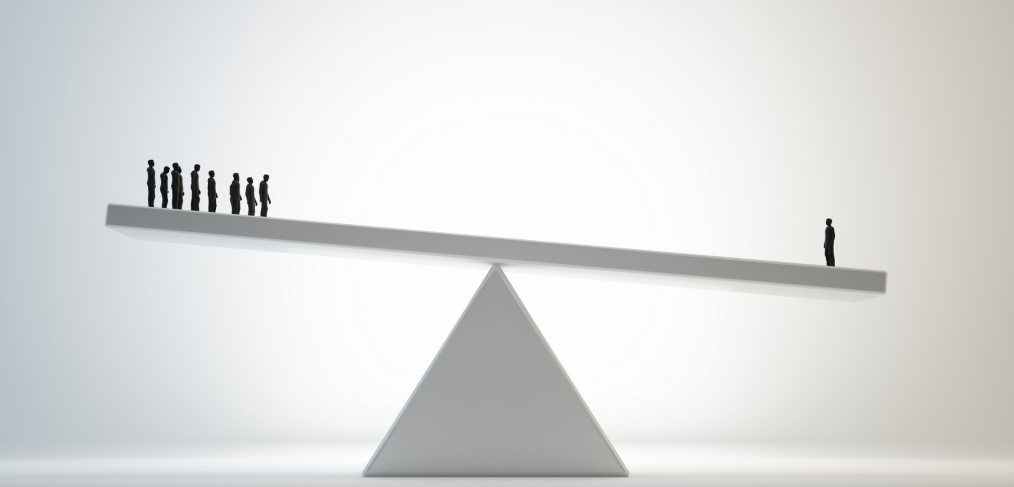For all the time people spend concerned about physical strength and health, when it comes down to it, mental strength can mean even more.
Particularly for entrepreneurs, numerous articles talk about critical characteristics of mental strength—tenacity, “grit”, optimism, and an unfailing ability as Forbes contributor David Williams says, to “fail up.”
However, we can also define mental strength by identifying the things mentally strong individuals don’t do. Over the weekend, I was impressed by this list compiled by Amy Morin, a psychotherapist and licensed clinical social worker, that she shared in LifeHack. It impressed me enough I’d also like to share her list here along with my thoughts on how each of these items is particularly applicable to entrepreneurs.
1. Waste Time Feeling Sorry for Themselves. You don’t see mentally strong people feeling sorry for their circumstances or dwelling on the way they’ve been mistreated. They have learned to take responsibility for their actions and outcomes, and they have an inherent understanding of the fact that frequently life is not fair. They are able to emerge from trying circumstances with self-awareness and gratitude for the lessons learned. When a situation turns out badly, they respond with phrases such as “Oh, well.” Or perhaps simply, “Next!”
2. Give Away Their Power. Mentally strong people avoid giving others the power to make them feel inferior or bad. They understand they are in control of their actions and emotions. They know their strength is in their ability to manage the way they respond.
3. Shy Away from Change. Mentally strong people embrace change and they welcome challenge. Their biggest “fear”, if they have one, is not of the unknown, but of becoming complacent and stagnant. An environment of change and even uncertainty can energize a mentally strong person and bring out their best.
4. Waste Energy on Things They Can’t Control. Mentally strong people don’t complain (much) about bad traffic, lost luggage, or especially about other people, as they recognize that all of these factors are generally beyond their control. In a bad situation, they recognize that the one thing they can always control is their own response and attitude, and they use these attributes well.
5. Worry About Pleasing Others. Know any people pleasers? Or, conversely, people who go out of their way to dis-please others as a way of reinforcing an image of strength? Neither position is a good one. A mentally strong person strives to be kind and fair and to please others where appropriate, but is unafraid to speak up. They are able to withstand the possibility that someone will get upset and will navigate the situation, wherever possible, with grace.
6. Fear Taking Calculated Risks. A mentally strong person is willing to take calculated risks. This is a different thing entirely than jumping headlong into foolish risks. But with mental strength, an individual can weigh the risks and benefits thoroughly, and will fully assess the potential downsides and even the worst-case scenarios before they take action.
7. Dwell on the Past. There is strength in acknowledging the past and especially in acknowledging the things learned from past experiences—but a mentally strong person is able to avoid miring their mental energy in past disappointments or in fantasies of the “glory days” gone by. They invest the majority of their energy in creating an optimal present and future.
8. Make the Same Mistakes Over and Over. We all know the definition of insanity, right? It’s when we take the same actions again and again while hoping for a different and better outcome than we’ve gotten before. A mentally strong person accepts full responsibility for past behavior and is willing to learn from mistakes. Research shows that the ability to be self-reflective in an accurate and productive way is one of the greatest strengths of spectacularly successful executives and entrepreneurs.
9. Resent Other People’s Success. It takes strength of character to feel genuine joy and excitement for other people’s success. Mentally strong people have this ability. They don’t become jealous or resentful when others succeed (although they may take close notes on what the individual did well). They are willing to work hard for their own chances at success, without relying on shortcuts.
10. Give Up After Failure. Every failure is a chance to improve. Even the greatest entrepreneurs are willing to admit that their early efforts invariably brought many failures. Mentally strong people are willing to fail again and again, if necessary, as long as the learning experience from every “failure” can bring them closer to their ultimate goals.
11.Fear Alone Time. Mentally strong people enjoy and even treasure the time they spend alone. They use their downtime to reflect, to plan, and to be productive. Most importantly, they don’t depend on others to shore up their happiness and moods. They can be happy with others, and they can also be happy alone.
12. Feel the World Owes Them Anything. Particularly in the current economy, executives and employees at every level are gaining the realization that the world does not owe them a salary, a benefits package and a comfortable life, regardless of their preparation and schooling. Mentally strong people enter the world prepared to work and succeed on their merits, at every stage of the game.
13. Expect Immediate Results. Whether it’s a workout plan, a nutritional regimen, or starting a business, mentally strong people are “in it for the long haul”. They know better than to expect immediate results. They apply their energy and time in measured doses and they celebrate each milestone and increment of success on the way. They have “staying power.” And they understand that genuine changes take time. Do you have mental strength? Are there elements on this list you need more of? With thanks to Amy Morin, I would like to reinforce my own abilities further in each of these areas today. How about you?
Source: www.forbes.com





